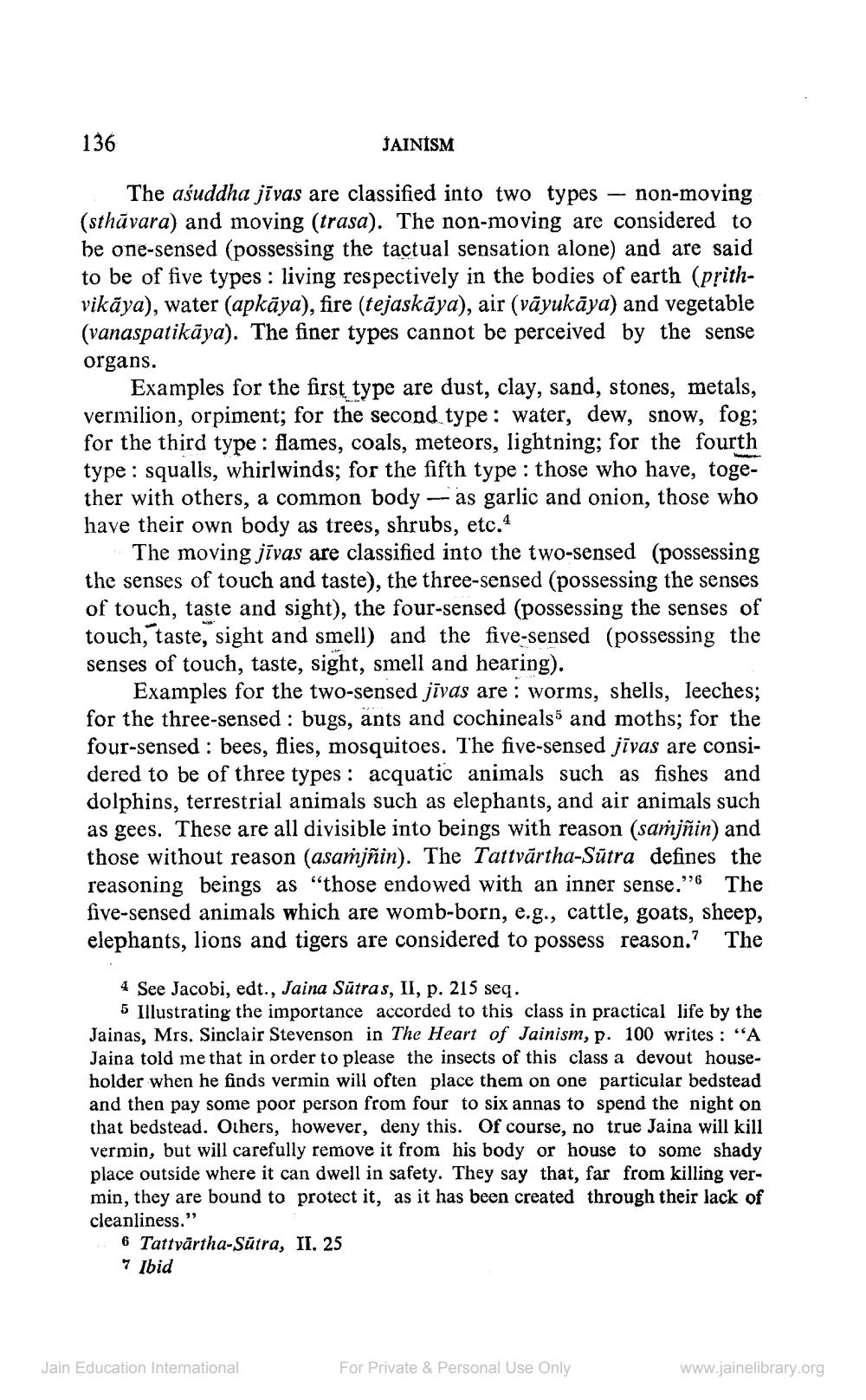________________
136
The aśuddha jivas are classified into two types non-moving (sthāvara) and moving (trasa). The non-moving are considered to be one-sensed (possessing the tactual sensation alone) and are said to be of five types: living respectively in the bodies of earth (prithvikaya), water (apkāya), fire (tejaskāya), air (vāyukāya) and vegetable (vanaspatikāya). The finer types cannot be perceived by the sense organs.
JAINISM
Examples for the first type are dust, clay, sand, stones, metals, vermilion, orpiment; for the second type: water, dew, snow, fog; for the third type: flames, coals, meteors, lightning; for the fourth type: squalls, whirlwinds; for the fifth type: those who have, together with others, a common body as garlic and onion, those who have their own body as trees, shrubs, etc.4
The moving jīvas are classified into the two-sensed (possessing the senses of touch and taste), the three-sensed (possessing the senses of touch, taste and sight), the four-sensed (possessing the senses of touch, taste, sight and smell) and the five-sensed (possessing the senses of touch, taste, sight, smell and hearing).
Examples for the two-sensed jīvas are: worms, shells, leeches; for the three-sensed: bugs, ants and cochineals and moths; for the four-sensed: bees, flies, mosquitoes. The five-sensed jīvas are considered to be of three types: acquatic animals such as fishes and dolphins, terrestrial animals such as elephants, and air animals such as gees. These are all divisible into beings with reason (samjñin) and those without reason (asaṁjñin). The Tattvärtha-Sutra defines the reasoning beings as "those endowed with an inner sense." The five-sensed animals which are womb-born, e.g., cattle, goats, sheep, elephants, lions and tigers are considered to possess reason." The
4 See Jacobi, edt., Jaina Sūtras, II, p. 215 seq.
5 Illustrating the importance accorded to this class in practical life by the Jainas, Mrs. Sinclair Stevenson in The Heart of Jainism, p. 100 writes: "A Jaina told me that in order to please the insects of this class a devout householder when he finds vermin will often place them on one particular bedstead and then pay some poor person from four to six annas to spend the night on that bedstead. Others, however, deny this. Of course, no true Jaina will kill vermin, but will carefully remove it from his body or house to some shady place outside where it can dwell in safety. They say that, far from killing vermin, they are bound to protect it, as it has been created through their lack of cleanliness."
6 Tattvärtha-Sutra, II. 25 7 Ibid
Jain Education International
For Private & Personal Use Only
www.jainelibrary.org




